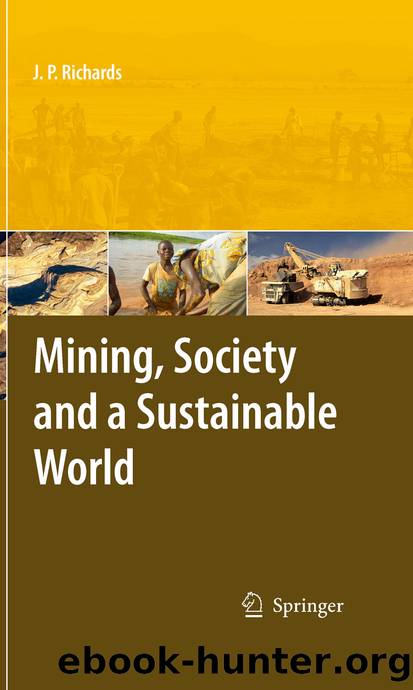Mining, Society, and a Sustainable World by Jeremy Richards

Author:Jeremy Richards
Language: eng
Format: epub
Publisher: Springer Berlin Heidelberg, Berlin, Heidelberg
When a mine closes or approaches closure, workers will no longer be required and laws relating to the labor force may impose substantial obligations on the employer. These obligations may include advance termination notice requirements, as well as the need to provide termination benefits. In some jurisdictions, for example many jurisdictions in Europe, advance notice periods can be substantial, as can termination benefits. Termination benefits can range from payment to a worker of a lump-sum based on a multiple of his monthly salary (e.g., an amount based on his or her length of employment), a transition period of health insurance coverage, and so forth. Because these costs will occur after the mine is no longer generating revenues, workersâ termination benefits may be at risk if the company does not have other sources of revenue, has not made real rather than mere accounting provision for these costs, or declares bankruptcy. In contrast, in many developing jurisdictions, termination obligations imposed by labor law are minimal or absent.
Statutory requirements to provide training so that laid-off workers can find work in another employment field are rare but have been a feature in the closure of some state-owned mines (for example, coal mine closures in Poland, Ukraine, and the United Kingdom; Egorova and Otto 1998). Some companies voluntarily provide laid-off workers with such training or assist them with locating new employment, whether or not this is required by the regulatory system. For mines that provide a pension scheme to their workers, another issue is how that scheme will be handled once the mine closes.
If a mine is major employer in the area, closure-induced unemployment impacts can be great and are not limited to the immediate work force. For every worker employed by a mine more than one job is created in the wider economy, and this is commonly referred to as the employment multiplier effect. Depending on both the nature of a mine and the local economy, the employment multiplier effect may be small or large. Schodde (2006) reports that in data drawn from 16 studies, the employment multiplier effect for mines ranged from a low of 1.39 to a high of 3.34 at the local level (i.e., for every 1 worker employed by a mine, 1.39â3.34 additional jobs were created in the local economy), and was slightly higher at the national level. In a study of the Chilean mining industry, Aroca (2000) found that the employment multiplier effect ranged from just over 1â1.7 for older mines, and could be as high as 5.7 for new mines that use a high level of contract labor or who outsource services done internally at older mines. There is no standardized approach used in computing employment multiplier effects, and the above numbers should be used with caution. However, regardless of the calculation methodology, in almost any mining situation, for every worker employed by the mine, other employment will be generated in the wider economy.
Many mines worldwide are increasingly relying on casual or subcontracted labor and services. In India,
Download
This site does not store any files on its server. We only index and link to content provided by other sites. Please contact the content providers to delete copyright contents if any and email us, we'll remove relevant links or contents immediately.
International Integration of the Brazilian Economy by Elias C. Grivoyannis(75944)
The Radium Girls by Kate Moore(11641)
Turbulence by E. J. Noyes(7720)
Nudge - Improving Decisions about Health, Wealth, and Happiness by Thaler Sunstein(7262)
The Black Swan by Nassim Nicholas Taleb(6786)
Rich Dad Poor Dad by Robert T. Kiyosaki(6197)
Pioneering Portfolio Management by David F. Swensen(6092)
Man-made Catastrophes and Risk Information Concealment by Dmitry Chernov & Didier Sornette(5674)
Zero to One by Peter Thiel(5508)
Secrecy World by Jake Bernstein(4407)
Millionaire: The Philanderer, Gambler, and Duelist Who Invented Modern Finance by Janet Gleeson(4118)
The Age of Surveillance Capitalism by Shoshana Zuboff(4002)
Skin in the Game by Nassim Nicholas Taleb(3983)
The Money Culture by Michael Lewis(3862)
Bullshit Jobs by David Graeber(3851)
Skin in the Game: Hidden Asymmetries in Daily Life by Nassim Nicholas Taleb(3739)
The Dhandho Investor by Mohnish Pabrai(3575)
The Wisdom of Finance by Mihir Desai(3539)
Blockchain Basics by Daniel Drescher(3343)
